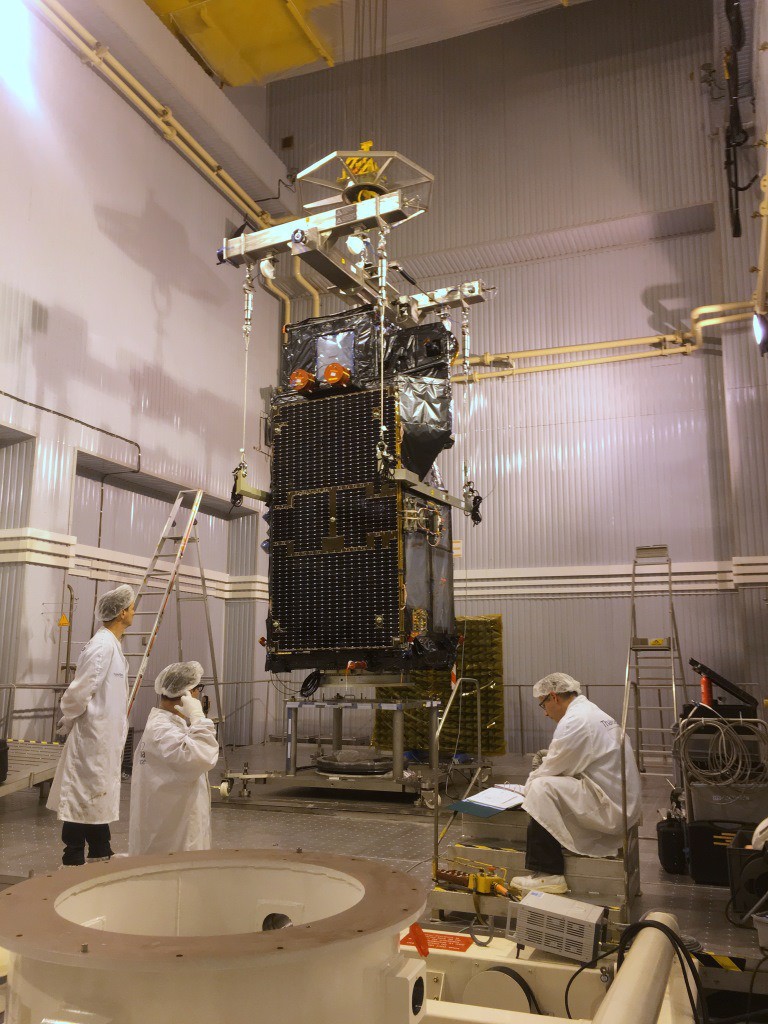Friday 4 December was an important day for us – the transport container was opened so that we were able to see our Sentinel-3A satellite again!
First thing in the morning, the Thales Alenia Space mechanical team started preparing to open the container while a final check was done to make sure the cleanroom was clean and that the temperature and humidity levels were ok.
By about 11:00 the great moment had arrived … Sentinel-3A was slowly revealed as the container lid was removed.
It was a very good feeling to see our satellite again as it had been in the container since mid-October
A detailed visual inspection showed that the satellite was in very good health and had survived the journey well.
In the afternoon, the satellite was removed from the container, mounted on the tilting dolly and rotated 90° into a vertical position.
Everything was then prepared so that the satellite could be placed on its integration stand the following day. All the functional tests and final integration activities will be carried out from this position.
In parallel, the electrical/functional test team continued installing all the ground support equipment (GSE) in the testing area.
A systematic functional check of all the electrical ground support equipment (EGSE) was done so that the team was ready to wake up our baby with a first ‘switch on’ tomorrow.
So, two days after arrival, almost everything has been unpacked and we are settling into the MIK nicely.
As well as these technical activities, we were involved in the usual daily planning meetings in morning and afternoon, the subject of which is now mostly about bus schedules to meal deliveries and so on.
In the evening, the launcher fairing was moved into the cleanroom adjacent to ours. Tomorrow the military will open the fairing and install the fairing halves in the jigs ready to encapsulate the satellite.
Now that the equipment is unpacked and the satellite ready for testing in the cleanroom, the early team will now leave and be replaced by experts who will support the satellite and instrument tests in the coming two weeks.
We achieved another very important step on Saturday: we woke up our baby!
So by 11:30 the satellite had been put on its vertical integration stand which is on the fuelling platform. Then it was up to the electrical and functional test engineers to connect the test harness from the EGSE room to the satellite and prepare for the first power up.
The satellite was then switched on and we received the first ‘wake up’ message our baby after being in dormant mode for several weeks.
In the afternoon the test team started with the SMU cross-check test and the propulsion team further prepared all the GSE in the cleanroom so that they can start checking the propulsion subsystem next week. Also, the payload team started to prepare all the GSE for the synthetic aperture radar altimeter instrument test.
Sunday was a day off. Over the next two weeks, the team will work in shifts covering 07:00–22:00.
We were lucky that the snow showers in the afternoon passed away in time so that we could witness a Soyuz launch at 17:00!
Weather in Plesetsk: -2/+1, snow showers and a shooting star going to space (Soyuz) ….




Discussion: no comments